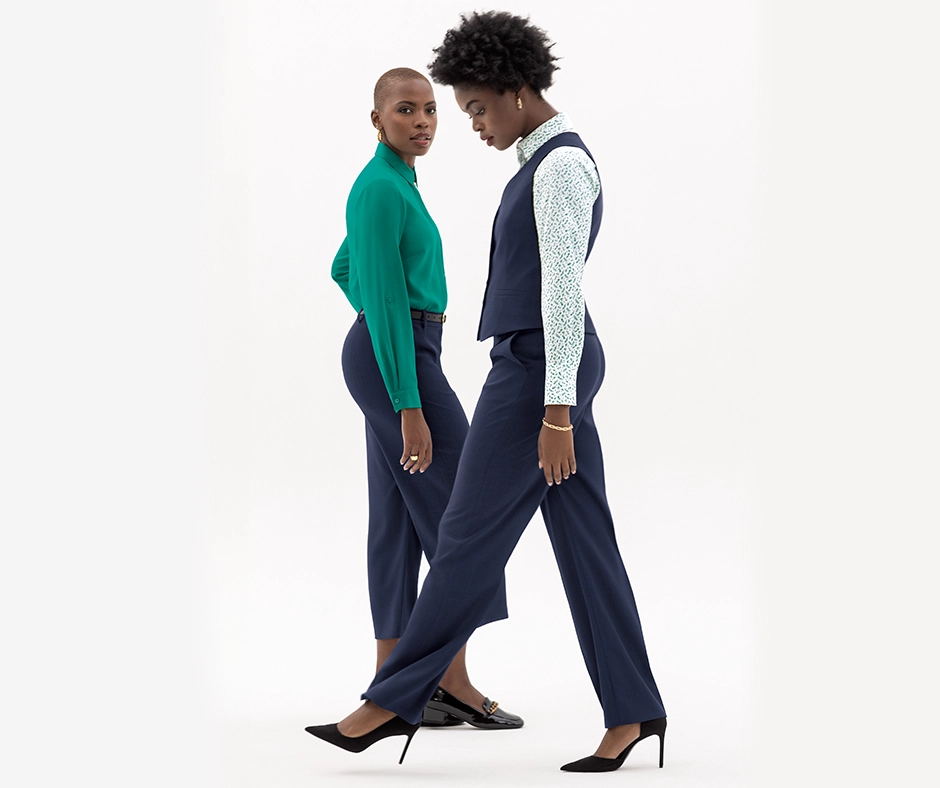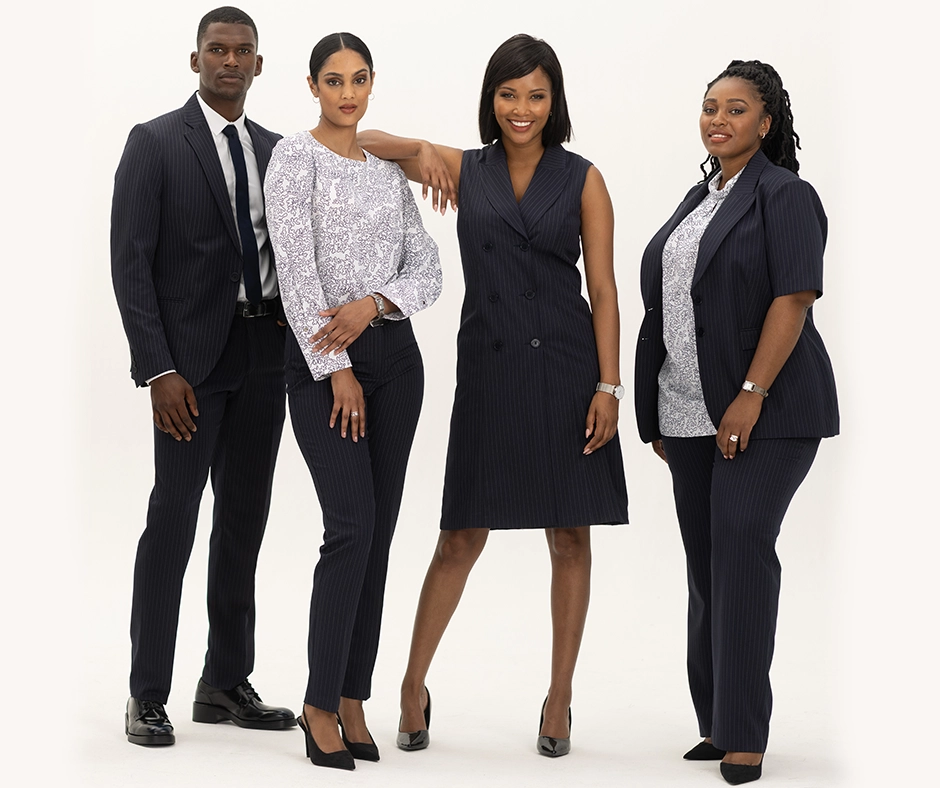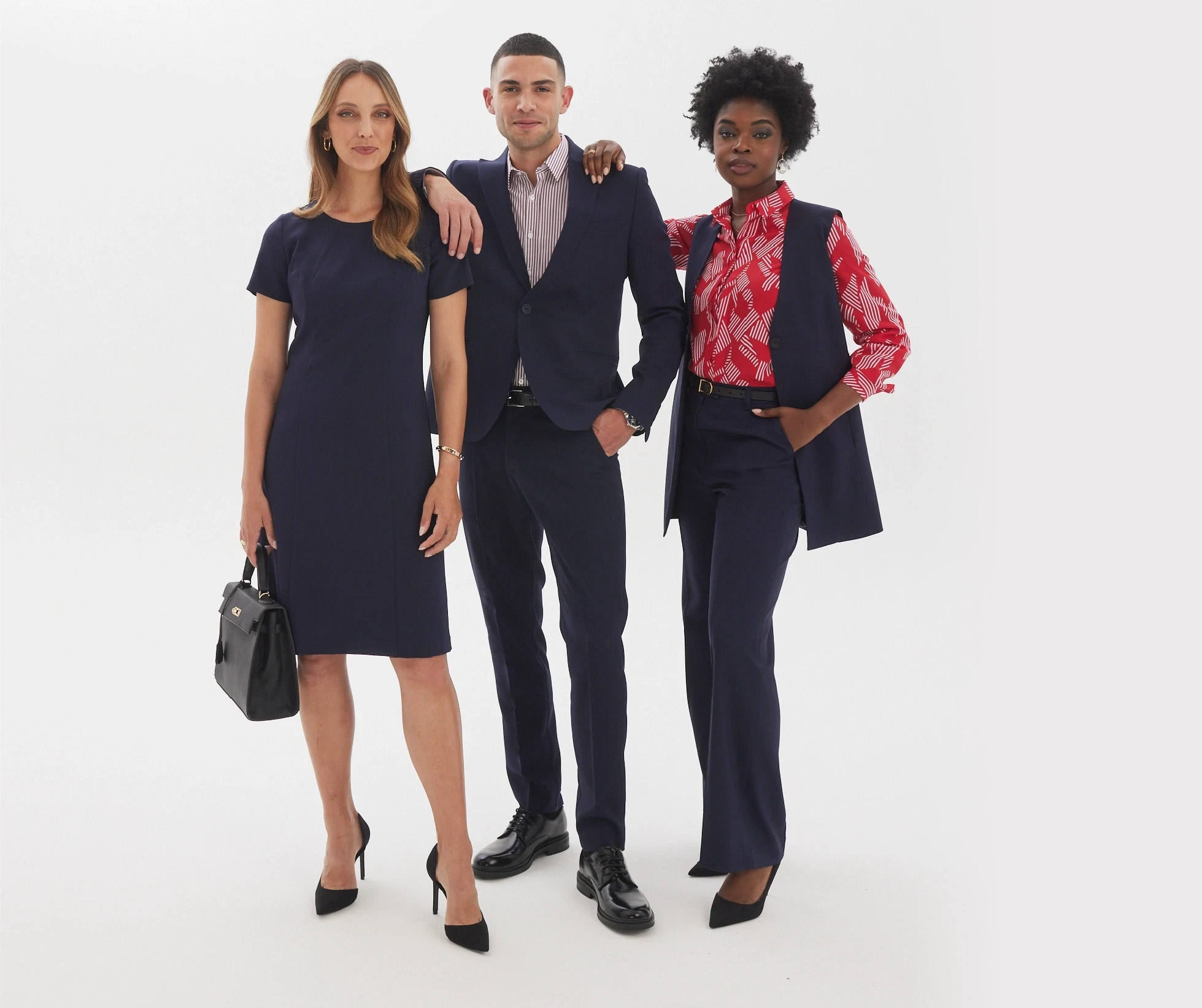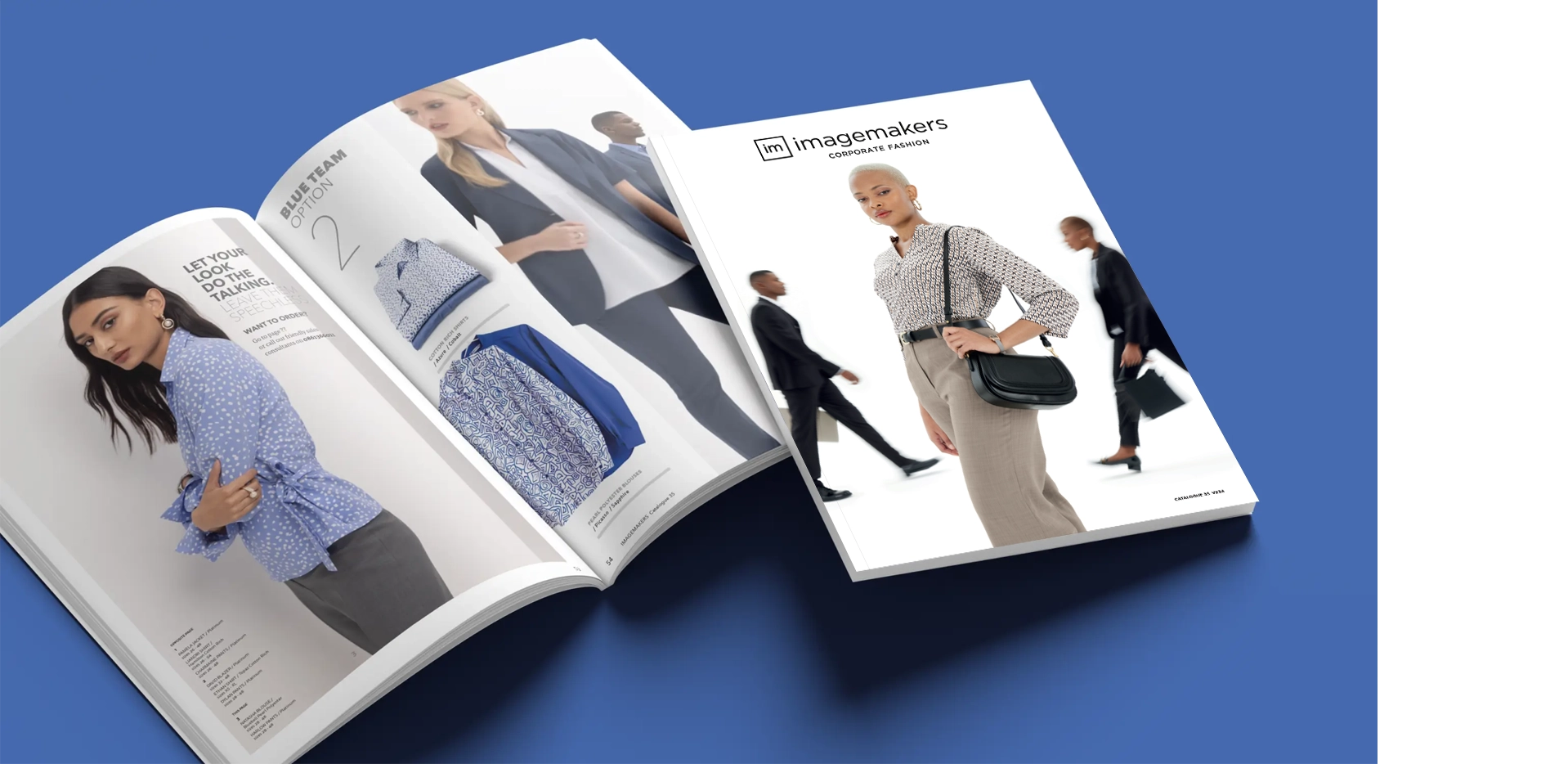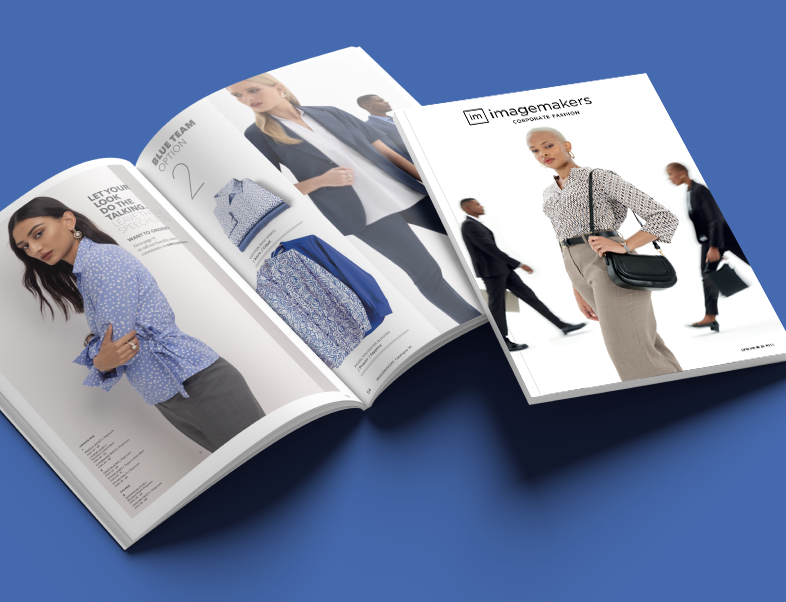Most companies don't set out to make a bad uniform decision. It just happens, whether slowly or organically and usually with management so focused on other areas of the business they simply allow the following to dictate the direction: a tight budget, a boardroom level decision - ‘order new outfits immediately' then rushing the order through, the belief that “a shirt is a shirt” as long as it smartens the team up a bit or has a logo stitched on. But after over 40 years of working with South Africa's top organisations across every industry - corporate, hospitality, healthcare, aviation, retail, education - we've learned something every successful team has in common: they put ‘People First'.
The biggest mistake companies make when choosing uniforms is focusing on the clothes… and forgetting about the people who wear them.
It's not a fabric problem. It's not a colour problem. It's not even a quality problem. It's a people problem - the problem being a lack of respect and consideration for the people who run the business and maintain its viability. If you value them, show them, don't just tell them. There, rant over.
This problem shows up in surprising ways - low adoption, complaints, constant returns, teams going off-brand because the garments don't feel or fit right, and even a drop in confidence and customer-facing energy. Yes, it's unfortunately true - we wrote a whole piece about how this can cost companies ‘millions' here.
Let's unpack what this mistake actually looks like - and how to avoid it.
1.Uniforms that look good on paper but not on people
Companies start the process with catalogues, brand colours, and Pinterest boards. There's nothing wrong with that - inspiration is helpful. But photos don't account for the most important variable: real bodies, real roles, real movement. Companies are fearful of making that call – the actual call where they speak to an expert. Why? Is it the feeling that a call is 'unnecessary', are they too busy, too shy or introverted, will they be overwhelmed with options?
But think about it, if your team lifts, walks, drives, cleans, meets clients, stands all day, or works across mixed climates, their team uniforms need to work as hard as they do. If nothing else, it's false economy not to make that call.
How to avoid it:
- Call us - we’re trained to listen, cut to the chase and help you immediately.
- Discussion and 'fit sessions' with the whole team - not just managers.
- Realise that corporate clothing is worn across the company and across multiple touch points, not just in a boardroom.
- Ask your team where discomfort shows up most: is it sleeves, seams, stretch, breathability?
- Choose fabrics based on daily use, not brochure descriptions.
Uniforms should look polished at 8AM and still feel comfortable at 6PM. Because between those times is where the magic happens.
2.Choosing style before choosing purpose
Some corporate wear choices fail because they’re chosen purely for aesthetic reasons. Others fail because they’re chosen purely for practicality. The sweet spot is in the middle.
A stylish garment that can’t handle the job becomes a distraction.
A hyper-functional garment that looks dated weakens your brand presence.
How to avoid it:
Ask a simple question: "What must this uniform help our team do?"
- Look sharp for clients?
- Be consistent across branches?
- Stay cool in heat or in busy industries?
- Move easily without constant adjustments?
- Support a long shift on the floor?
- Bring our team together and enhance our company culture?
When form meets function, you get work uniforms that… well, work - and last!
3. Forgetting that a uniform is a brand touchpoint
A uniform sets the tone long before a word is spoken. Customers read it instantly:
"Professional."
"Warm."
"Trustworthy."
"Detail-driven."
Or… they read the opposite (simply add an ‘un’ or ‘not’ next to each term above).
When companies are simply happy with "it looks better than what we had" instead of what truly aligns with their brand, the inconsistency is visible - especially across multiple branches.
How to avoid it:
- Select a design that reflects your visual identity (colours, tone, brand personality).
- Use consistent palettes and fabric families across roles.
- Keep all garments on the same style wavelength - modern, classic, bold, timeless.
A unified team presence is one of the most powerful forms of branding.
4. Not involving the team early enough
This is the most preventable mistake - and often the costliest.
When employees aren't part of the process, you get resistance, alterations, wrong fits, and that dreaded outcome: corporate wear worn incorrectly or not even worn at all.
How to avoid it:
- Run a quick survey: what do they like, dislike, struggle with?
- Include a few staff members in the trial phase.
- Talk to us, we test fabrics for heat, stretch, and wearability.
- Ask your team to rate comfort and movement after a full shift.
We've seen it happen time and time again - when a team feels included, they wear their uniform with pride - not out of obligation.
5. Buying for today instead of planning for the next 2-3 years
Uniforms are a long-term investment. But many companies choose garments based only on current availability or short-term cost. I imagine you're shaking your head and saying to yourself, 'we wouldn't do that' - but you'd be surprised how many companies start their uniform journey by making this mistake.
The result?
Styles change, stock levels fluctuate, staff turnover evolves, and suddenly the garments that were chosen can’t be sourced and can't scale.
How to avoid it:
- Choose corporate clothing suppliers with a proven track record and long-term style continuity.
- Select garments that will be available for years, not months.
- Ensure fabrics are re-orderable and consistent batch to batch.
- Work with local uniform manufacturers who control their supply chain.
This is where South African based, in-house production becomes a huge advantage.
So… how do you get uniforms right from the start?
Here's the Imagemakers approach - tested, refined, and people-proofed for over 40 years:
-
Start with your people
Their comfort, their movement, their workday.
-
Consider your brand and culture
Colours, identity, and story - brought to life in fabric and fit.
-
Choose designs that scale
From branch to branch, and year to year.
-
Fit, test, refine
Because a uniform should feel as good as it looks.
-
Select a partner who makes everything locally
It keeps quality consistent, lead times fast, and accountability real.
When your people feel good - your customers feel it too.
Need to see this in case studies - let's take a look at some of SA's Best Dressed Teams - the ones who clearly got it right - Top Style Tips from South Africa's Top 50 Best-Dressed Teams
Final thought
A uniform isn't just clothing. It's culture, confidence, and brand trust - all stitched together.
If you want a team that looks united, effortlessly stylish, comfortable, professional, and proud (yes, yes, yes, yes and yes) the first step is simple:


